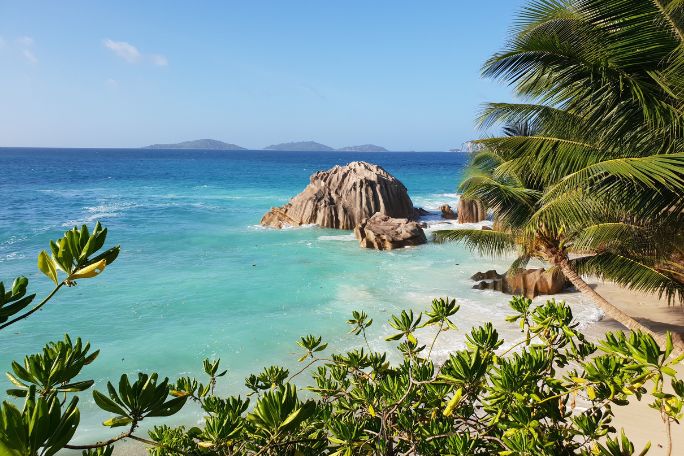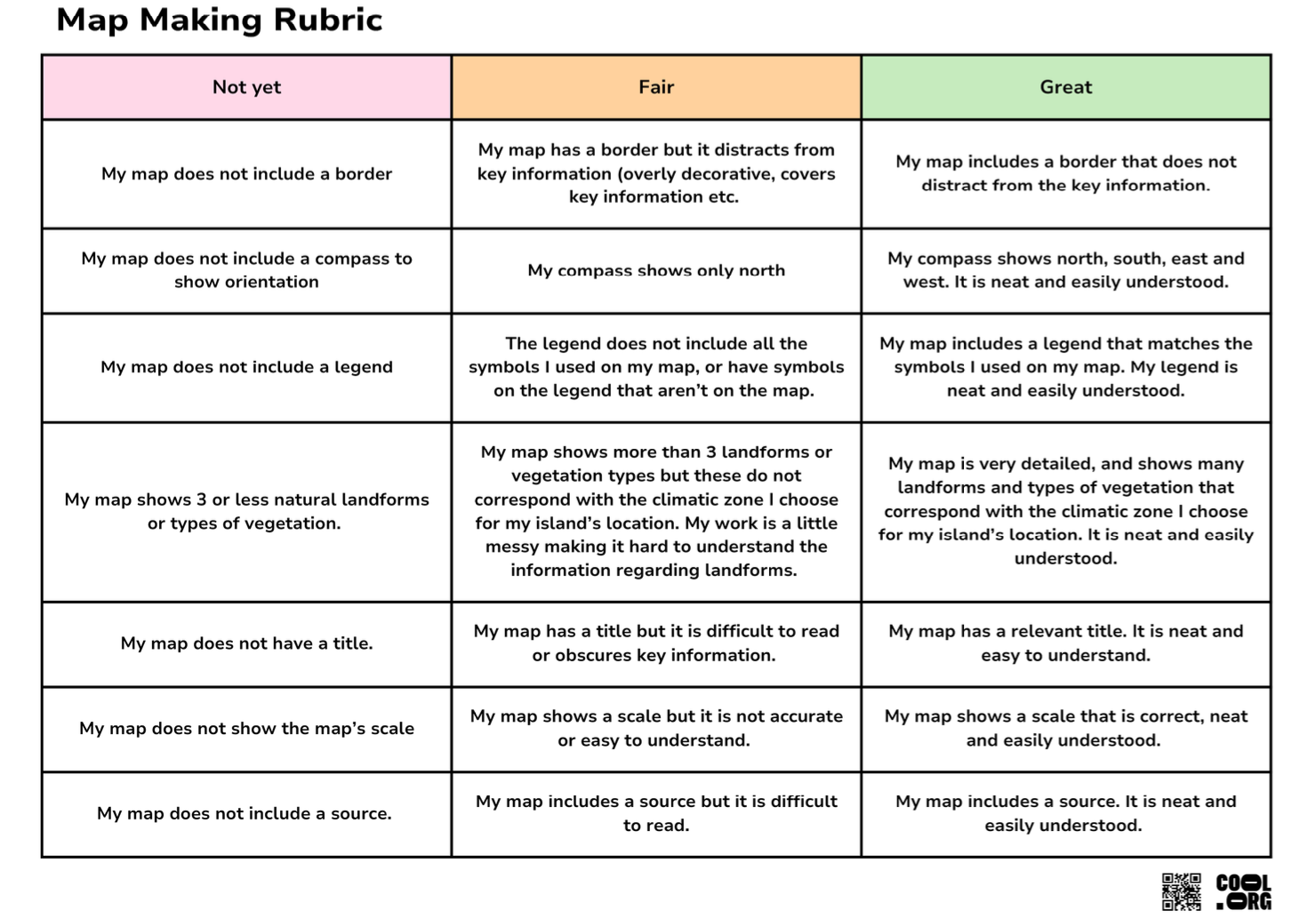Lesson summary
The plane crashes into the sea, and you all are washed up on a deserted island. How will you all survive? Students will revise the climatic zones of the world. They will then create a map of the island using cartographic conventions.
Learning intentions:
Students will...
- understand the different climatic zones in our region such as tropical, warm temperate and cool temperate
- create a map using spatial technologies and cartographic conventions as appropriate, including border, source, scale, legend, title and north point, to convey information and data such as location.
Success criteria:
Students can...
- create a map using appropriate cartographic conventions to convey the climatic location of their island.
Lesson guides and printables
Curriculum links
Select your curriculum from the options below.
Lesson details
Skills
This lesson is designed to build students’ competencies in the following skills:
- problem solving
- digital literacy
- cultural understanding
- intercultural understanding
- creativity
- communication
Curriculum Mapping
Australian Curriculum (v9.0) content description:
Year 5 HASS:
- Students learn to locate, collect and organise information and data from primary and secondary sources in a range of formats (AC9HS6S02)
General capabilities: Critical and Creative Thinking and Literacy.
Cross-curriculum priority: Sustainability
Relevant parts of Year 5 achievement standards: Students develop questions, and locate, collect and organise information and data from a range of primary and secondary sources.
UN Sustainable Development Goals
UN SDG 4: Ensure inclusive and equitable quality education and promote lifelong learning opportunities for all
- Target 4.7: By 2030, ensure that all learners acquire the knowledge and skills needed to promote sustainable development, including, among others, through education for sustainable development and sustainable lifestyles, human rights, gender equality, promotion of a culture of peace and non-violence, global citizenship and appreciation of cultural diversity and of culture’s contribution to sustainable development
Resources Required
- A3 white paper (cartridge or copier)
- Atlases to share (or world maps)
- BOLTSS reference sheet for students
- Globe or world map
- Map making rubric
- Pencils, textas etc
- Student reference sheets
Additional Info
This series of lesson will focus on a narrative that the students are cast away on an island and must consider the various aspects of surviving in such a setting. To guide this learning, we recommend you use suspended disbelief to ensure this experience is a fun one for all of the class. Suspension of disbelief is the willingness for a person to accept fantasy as it is presented to them.
Suspending disbelief fosters imagination and creativity, allowing kids to explore worlds and ideas beyond our everyday reality. It enables deeper immersion in stories or simulations, enhancing engagement and emotional connection to the subject matter. Embracing suspended disbelief in learning encourages open-mindedness, enabling learners to grasp complex concepts and think beyond conventional boundaries.
Imagine, as a class, you have all been on a school camp. The plane crashes into the sea, and they are washed up on a deserted island. At this point, they will need to understand the concept of suspension of disbelief so they accept the fantasy of this scenario as it is presented to them.
In the first lesson of this unit, students choose from a list of items to assist them with their survival on the island until they are rescued, in doing so, they need to consider the differences between needs and wants.
In this lesson, you will also reinforce the importance of ‘stepping lightly on the Earth’. While stranded on their island, they need to consider how they will ensure their survival without harming the natural environment. There is an opportunity to discuss how the items they select from a given list will not only assist their survival but also how their manufacture has impacted our environment. Further, they should consider the environmental impacts of the item on this island.
Level of teacher scaffolding: Medium - teachers will be required to ‘set the scene’ for this unit of work and in doing so explain the concept of suspension disbelief to their students.
This is an original Cool+ lesson.
Related Professional Learning
Cool+ Micro PL: Creating Immersive, Playful Learning
Quick Summary: This course will help you build confidence and skills in creating immersive learning experiences and offer ways to engage students deeply.
Cool+ Micro PL: Playful Ideas: Primary Literacy
Quick Summary: This micro PL gives you a range of playful ideas for use in primary schools with a focus on literacy; alongside the pictures will be provocations and reflections to help you continue to improve your practice. These ideas are there to think about how to make literacy fun and enjoyable - especially for students who struggle to build mastery of language.



Welcome back!
Don't have an account yet?
Log in with:
Create your free Cool.org account.
Many of our resources are free, with an option to upgrade to Cool+ for premium content.
Already have an account?
Sign up with:
By signing up you accept Cool.org's Terms and Conditions(Opens in new tab) and Privacy Policy(Opens in new tab).